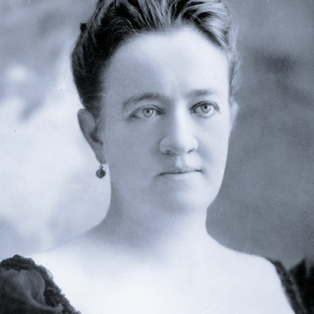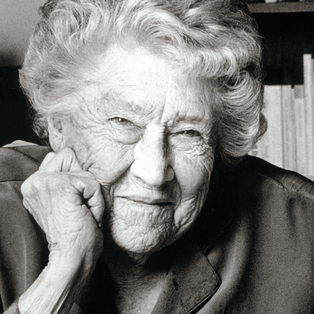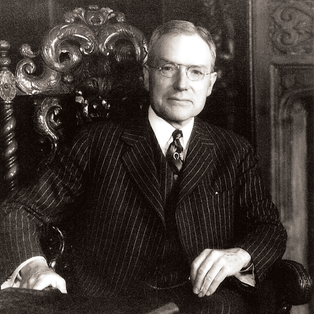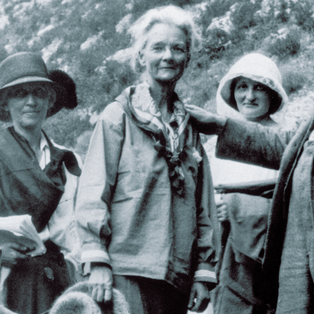The University Library: A Foundation for Teaching and Research
Distinguished scholars could not be persuaded to leave their universities and move to distant California unless there was a first-rate library to support their research.
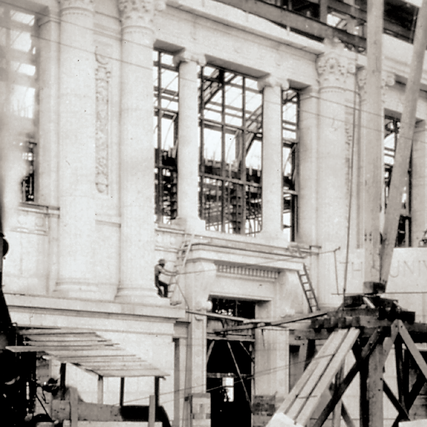
When Benjamin Ide Wheeler arrived from Cornell University in October 1899 as the university’s eighth president, he declared, “Give me a library, and I’ll build a university about it.” His new library came, some years later, through a bequest from Charles Franklin Doe, a San Francisco dealer in window sashes, doors, and blinds. Doe believed that people owed a debt to the state in which they had succeeded.
May Treat Morrison left a legacy to the university when she donated her family’s 15,000-volume library in 1921. Morrison and husband Alexander both attended UC Berkeley and graduated in 1878. The Morrison Library within Doe Memorial Library has been one of the most beloved spots on campus ever since. It serves as a haven for students and is open to the public. In addition, Morrison left UC Berkeley with funds used to construct Morrison Hall for the Department of Music.
When Benjamin Ide Wheeler arrived from Cornell University in October 1899 as the university’s eighth president, he declared, “Give me a library, and I’ll build a university about it.” His new library came, some years later, through a bequest from Charles Franklin Doe, a San Francisco dealer in window sashes, doors, and blinds. Doe believed that people owed a debt to the state in which they had succeeded.
The 1905 acquisition of the manuscripts and books of Hubert Howe Bancroft, a San Francisco bookseller and historian, put the University of California’s library on the map. Among the valuable materials that became part of the Bancroft Library were the Tebtunis Papyri, 23,000 ancient Egyptian documents collected during an 1899–1900 expedition financed by Phoebe Apperson Hearst.
The Mark Twain Papers have been housed at the Bancroft since 1949, when Twain’s daughter, Clara Clemens Samossoud, bequeathed them to the university, creating a major repository of his work.
At the time of Wheeler’s retirement in 1919, the collection consisted of 400,000 volumes. By 1965, the Library housed more than three million bound volumes as well as maps, manuscripts, recordings, and other resources. In 2009, more than 700 private donors helped support the Library’s extensive seismic retrofit and renovation.
Currently, the university’s libraries hold more than 13 million volumes. The UC Berkeley Library enriches the lives of thousands of students and other learners each year, whether on campus or online anywhere across the globe.
